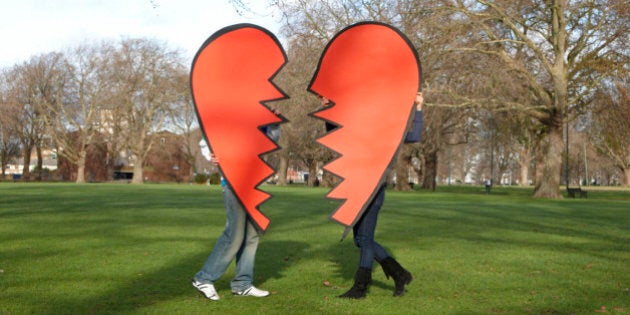
There are lots of interesting statements that get put forward as fact. To help separate fact from fiction, here is an analysis of the data which busts five popular myths.
Myth 1: Half of all marriages end in divorce.
This statistic is certainly daunting for Aussies about to say "I do", but is there any truth behind it? Actually, there are fewer divorces today than there were a decade ago -- even though there are far more marriages now than then.
Also, the divorce rate (the number of divorces per 1,000 people) has been declining for more than 30 years, and currently sits at two, an all-time low and 30 percent down on the rate of a decade ago. Marriages that do end in divorce are lasting 12 years, which is two years longer than they did 20 years ago.
Therefore, comparing the divorce rate of today against the marriage rate when these weddings took place 12 years ago, we have divorces equating to just 36 percent of those marriages. Of all current weddings, just 27 percent of those making their vows have been married before.
Based on this analysis, it is not the case that half of all marriages end in divorce, but by comparing national marriage and divorce rates, it can be estimated that around one in three marriages in Australia will end in divorce.
Myth 2: Today's young people will be the first generation of children who won't live as long as their parents.
The rise in childhood obesity, increased screen-time and associated sedentary lifestyles, and modern "lifestyle diseases" such as Type 2 diabetes and heart disease, have given rise to this assumption.
However, the longevity increases seen in developed nations like Australia over the past half-century is the product of public health measures, medical improvements, pharmaceutical advancements and astonishing increases in survivability rates across all age groups, rather than the result of better personal health choices such as healthier eating or increased exercise.
Life expectancy at birth for both males and females has been on a steady increase since records began in 1901. A boy born in Australia today can expect to live beyond 80 years, while a girl can expect to exceed 84. Having survived to age 60, men can expect to live another 23 years and women another 26 years.
The increase in life expectancy is one of the factors contributing to the ageing of Australia's population. Despite childhood obesity, life expectancy has not decreased but increased, and it continues to do so. However, it must be said that while medical interventions and health sciences can intervene to assist in an increase in the years of life, it is the personal choices and healthy lifestyles which will determine the quality of these years.
Myth 3: There are more New Zealanders living in Australia than in Auckland.
New Zealand is the second most common overseas country for Australian residents to be born in, after England. There are more than 617,000 people living in Australia who were born in New Zealand, and while many may identify as New Zealanders, a significant proportion are Australians who have a New-Zealand birthplace.
Further, the population of New Zealand's largest city, Auckland, exceeds 1.4 million, which is more than twice the number of Australia's New-Zealand-born residents. However, New Zealand's capital and second-largest city, Wellington, has a population of less than 400,000. Therefore, it could be said in loose terms that "more New Zealanders live in Australia than in Wellington". However, it is not the case that Australia is home to more Kiwis than Auckland.
Myth 4: There are more people alive now than have ever lived.
This myth argues that the total number of people in history who have died is less than 7.3 billion -- which is the current global population. There are some understandable reasons for positing this. In the year 1800, the global population was just 1 billion, and it took another 130 years to add an additional billion. Meanwhile, in just the past 50 years, the world's population has increased by 4 billion.
There are debates surrounding the calculations of historic human populations, with some demographers arguing that historic human population totals exceed 100 billion, while the most conservative estimates place it at closer to 45 billion -- yet even this is more than six times the current world population. In fact, more people have died since 1800 than are alive today, so it is certainly not the case that the global population exceeds total human deaths. The most reliable estimates are that the dead exceed the living by at least 10 to one.
Myth 5: There is a growing percentage of women remaining childless.
The birth rate has declined over the years from 2.1 four decades ago to 1.8 currently. However, this is not because a greater proportion of women are remaining childless. Smaller families are now more common; for example, of women aged 60-64, 55 percent had three or more children compared to just 34 percent of women aged in their forties.
Women in their forties were instead most likely to have fewer than three children. The couple household with children continues to be the most common household across Australia. However, it is the average number of children per household that has declined.
Women are also having children later, with the median age of a woman giving birth now 30.7 years and the highest fertility rate in Australia is of women aged 30-34, which is more than twice that of women in their early-to-mid twenties.
Therefore, while the birth rate has declined over the past few decades, it is still higher than it was in 2001, and the overall decline is a factor of women having fewer children and having children later, not from an increase in the proportion of women remaining childless, with that number unchanged at around one in four.